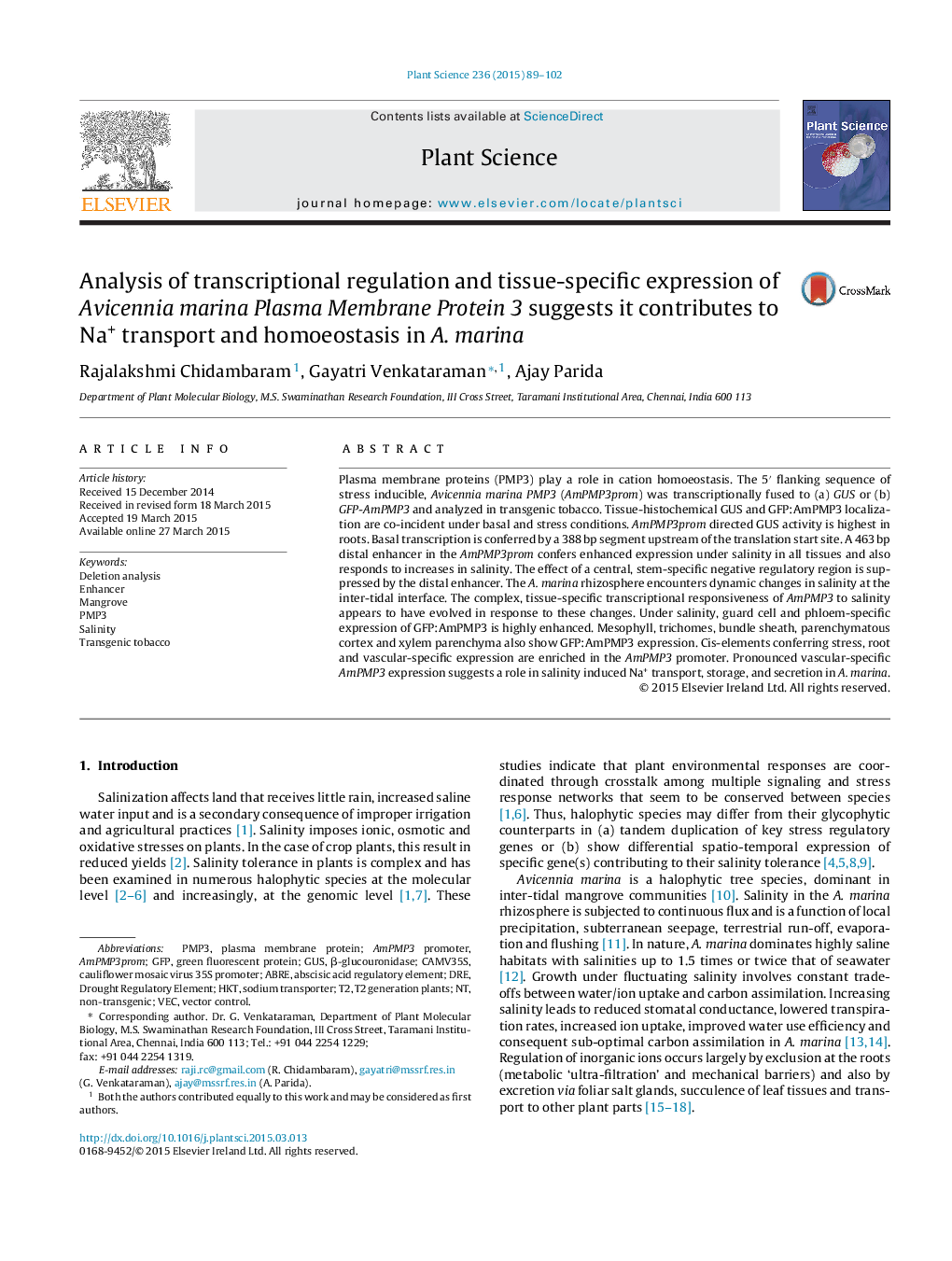| Article ID | Journal | Published Year | Pages | File Type |
|---|---|---|---|---|
| 2017023 | Plant Science | 2015 | 14 Pages |
Abstract
Plasma membrane proteins (PMP3) play a role in cation homoeostasis. The 5â² flanking sequence of stress inducible, Avicennia marina PMP3 (AmPMP3prom) was transcriptionally fused to (a) GUS or (b) GFP-AmPMP3 and analyzed in transgenic tobacco. Tissue-histochemical GUS and GFP:AmPMP3 localization are co-incident under basal and stress conditions. AmPMP3prom directed GUS activity is highest in roots. Basal transcription is conferred by a 388Â bp segment upstream of the translation start site. A 463Â bp distal enhancer in the AmPMP3prom confers enhanced expression under salinity in all tissues and also responds to increases in salinity. The effect of a central, stem-specific negative regulatory region is suppressed by the distal enhancer. The A. marina rhizosphere encounters dynamic changes in salinity at the inter-tidal interface. The complex, tissue-specific transcriptional responsiveness of AmPMP3 to salinity appears to have evolved in response to these changes. Under salinity, guard cell and phloem-specific expression of GFP:AmPMP3 is highly enhanced. Mesophyll, trichomes, bundle sheath, parenchymatous cortex and xylem parenchyma also show GFP:AmPMP3 expression. Cis-elements conferring stress, root and vascular-specific expression are enriched in the AmPMP3 promoter. Pronounced vascular-specific AmPMP3 expression suggests a role in salinity induced Na+ transport, storage, and secretion in A. marina.
Keywords
Related Topics
Life Sciences
Agricultural and Biological Sciences
Plant Science
Authors
Rajalakshmi Chidambaram, Gayatri Venkataraman, Ajay Parida,
